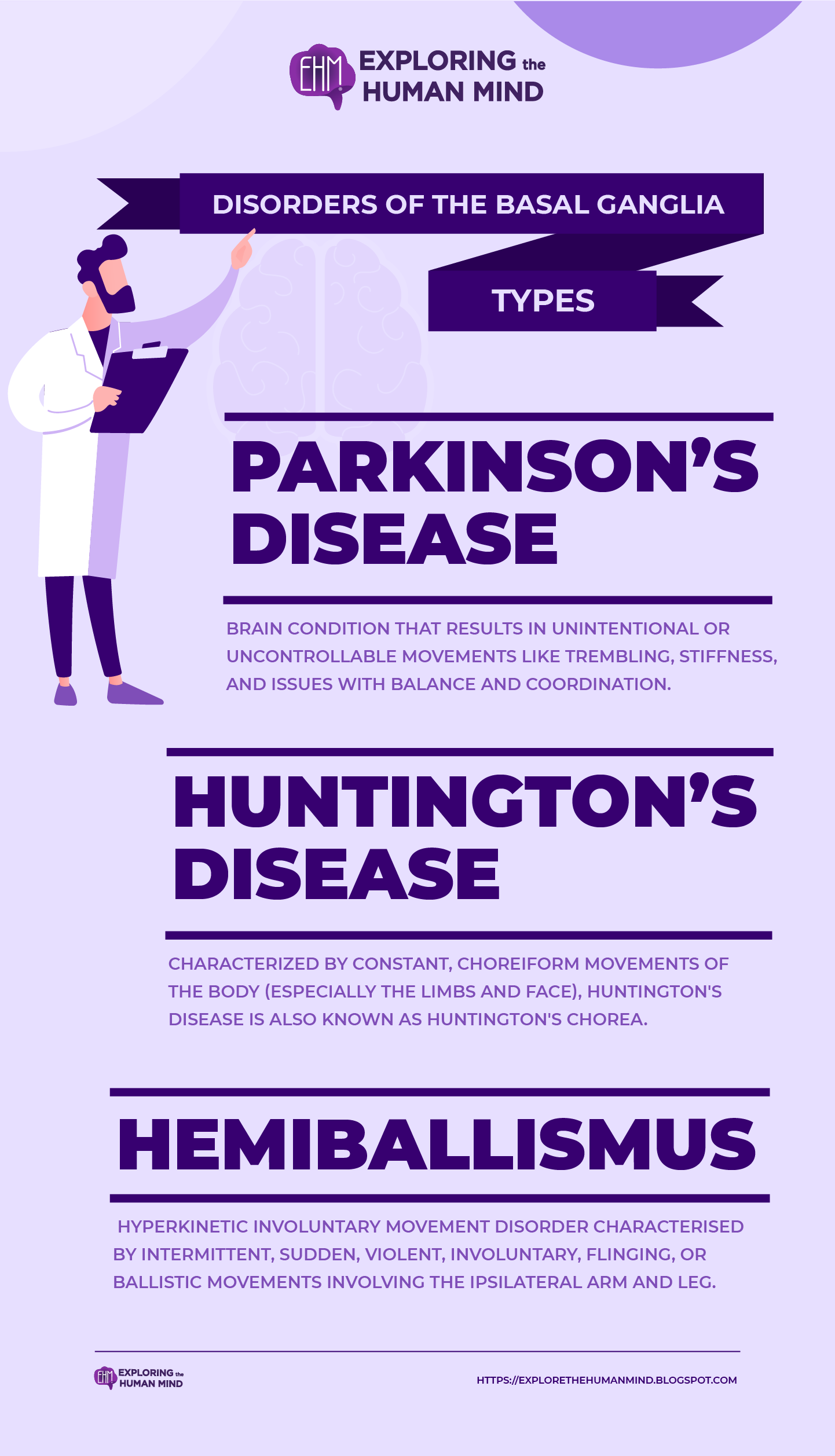Types of the Basal Ganglia Disorders
Parkinson’s disease
Parkinson's disease is a brain condition that results in unintentional or uncontrollable movements like trembling, stiffness, and issues with balance and coordination. Typically, symptoms start out mildly and get worse over time. People might experience difficulty speaking and walking as the illness worsens. Additionally, they may experience behavioral and mental changes, sleep issues, depression, memory loss, and fatigue.
The most severe symptom is severe bradykinesia or akinesia, though it is characterized by a resting tremor. Advanced patients have trouble initiating movements, though reflexive, involuntary movements can be normal. The absence of substantia nigra neurons appears to have slowed the motor cortex's output, preventing voluntary motor commands from reaching the brain stem and spinal cord.
Causes
The basal ganglia, a region of the brain that regulates movement, experience nerve cell impairment and/or death, which results in the most noticeable signs and symptoms of Parkinson's disease. These nerve cells, or neurons, normally generate the crucial brain chemical dopamine. Movement issues linked to the disease are brought on by decreased dopamine production as a result of the neurons' degeneration or death. Scientists are still unsure of what causes neurons to degenerate.
Huntington’s disease
A genetic disorder called Huntington's disease, also known as Woody Guthrie disease, is brought on by an excessively high number of repeats of the nucleotide sequence CAG on chromosome 4. This sequence repeats 9–35 times in healthy individuals; mutations that result in larger repeats cause Huntington's disease. Given that it is an autosomal dominant mutation, there is a 50% chance that the mutation will be passed down to a child of a Huntington's disease patient.
Huntington's disease will invariably manifest in people with the mutated gene, typically around middle age. The affected gene produces the huntingtin protein, whose purpose is unknown. However, the indirect pathway neurons in the striatum, especially those of the caudate nucleus, are killed by the gene's mutation.
Because it is characterized by constant, choreiform movements of the body (especially the limbs and face), Huntington's disease is also known as Huntington's chorea. Additionally, dementia is linked to the illness when it is advanced. Huntington's disease currently has no known cure or effective treatments.
Hemiballismus
Hemiballismus is a hyperkinetic involuntary movement disorder characterised by intermittent, sudden, violent, involuntary, flinging, or ballistic movements involving the ipsilateral arm and leg caused by dysfunction in the contralateral side's central nervous system.
A unilateral subthalamic nucleus lesion, commonly brought on by a stroke, results in hemiballismus. While the ipsilateral side of the body is unaffected, the contralateral side develops a ballismus as a result of this lesion (hence the name hemiballismus). New pharmacological therapies are being used to treat hemiballismus, and some surgical procedures have been done to alleviate the disorder's symptoms.

vectors by Freepick; graphic design by Vadot
Reference:
Disorders of the Motor System (Section 3, Chapter 6) Neuroscience Online: An Electronic Textbook for the Neurosciences | Department of Neurobiology and Anatomy - The University of Texas Medical School at Houston. (2020). Tmc.edu. https://nba.uth.tmc.edu/neuroscience/m/s3/chapter06.html
Parkinson’s Disease: Causes, Symptoms, and Treatments. National Institute on Aging. https://www.nia.nih.gov/health/parkinsons-disease#:~:text=Parkinson%27s%20disease%20is%20a%20brain,have%20difficulty%20walking%20and%20talking.






Comments
Post a Comment